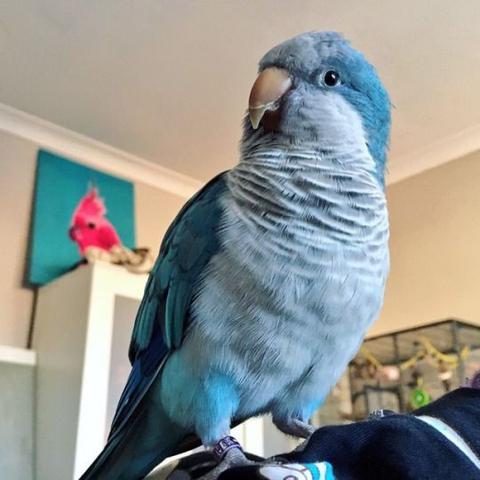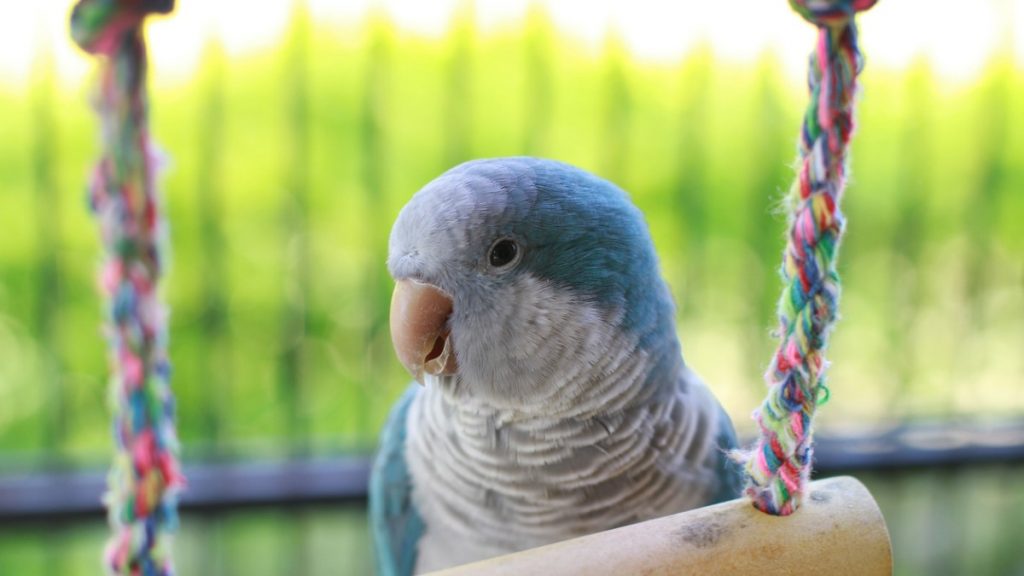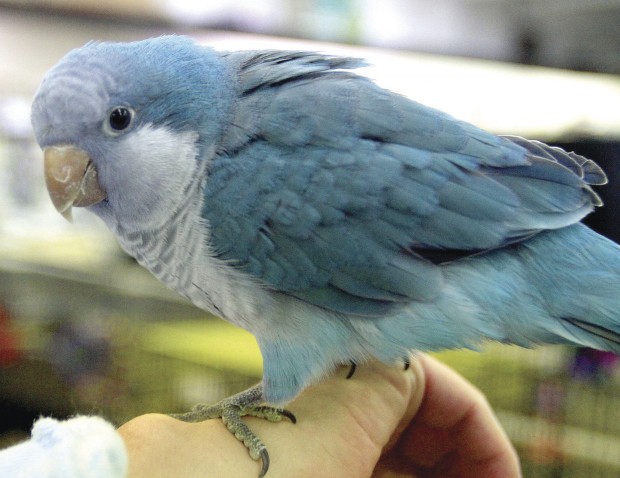
The blue quaker parrot originates from Belgium. The result of captive breeding, it was created in the 1840s and quickly became one of the most popular variations of the original quaker. If you don’t understand why so many people want one, these parrots make great pets. If you’re not convinced, consider the following:
1). Size
They are small birds. If you are new to parrots, and birds in general, you probably want a smaller creature that is easier to handle. This is where the blue quaker excels. Most of the captive varieties are just 3.5 ounces. They are also 11 inches in length, which is quite small. The female quaker is even smaller.
If you have no interest in larger parrots, the blue quaker is the perfect fit for you.

2). Nests
Quaker parrots have a reputation for building large nests. They are not content to live in the cage you have provided. In the wild, they use the sticks they can find to build elaborate structures that are comparable to apartment buildings. Some of these structures are connected to one another, forming neighborhoods of a sort.
Even in a cage, they won’t hesitate to build these structures. Because of the limited space and resources, they cannot replicate the designs found in the wild. However, the nests they will eventually produce will still take your breath away. The process is also highly entertaining.

3). Personality
If you want a bird because you want to build a bond with it, you will appreciate the blue quaker parrot. Despite its size, the creature is highly social. It maintains a cheerful demeanor on most days. It isn’t known for displaying timid behavior. Most quaker parrots are playful birds that tend to inject life and energy into every room in which they are placed.
4). Engagement
These birds are not merely cheerful. They want to share your life. They expect you to include them in your home’s activities. This kind of socialization will appeal to any pet owner that wants a bird that will respond positively to their presence.
The blue quaker wants as much attention as you can give it. In fact, it can become quiet and aggressive if you ignore it. In other words, you don’t have to worry about smothering it with your love.
5). Talking
As you might expect from such an active bird, the blue quaker parrot can talk. It doesn’t have the best vocabulary. That being said, it is eager to learn. Also, it talks a lot. While the bird’s vocabulary is poor, it does a decent job of mimicking voices and sounds. If you can give the parrot your time, you might be surprised by all the sounds and words you can teach it to produce.
If you hate the idea of sharing your home with a chatterbox, you will be happy to know that, while the blue quaker talks a lot, it is relatively quiet, especially when compared to some other species. It isn’t as prone to incessant screaming.
